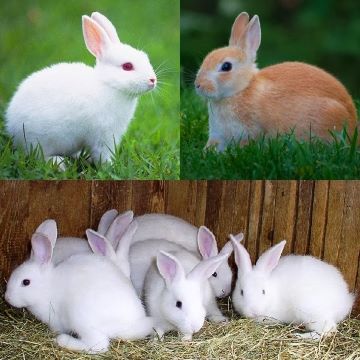
Rabbit Farming
Rabbit farming offers several economic advantages, making it an attractive venture for small-scale and commercial farmers alike. One of the key benefits is the low initial investment required. Rabbits need minimal space and can be raised in backyard hutches or small cages, reducing infrastructure costs.
Another major advantage is their rapid reproduction rate. A single doe can produce up to 40 kits per year, allowing farmers to quickly scale up production and generate continuous income. Additionally, rabbits have a high feed-to-meat conversion ratio, meaning they require less feed compared to other livestock to produce the same amount of meat.
Rabbit meat is lean, high in protein, and gaining popularity in health-conscious markets. This creates a growing demand, especially in urban areas, offering good market opportunities. Beyond meat, rabbits can also provide income from their fur, manure (used as organic fertilizer), and even as pets or for laboratory use.
Overall, rabbit farming is a cost-effective, sustainable, and profitable agricultural activity that can contribute significantly to household income and food security.


